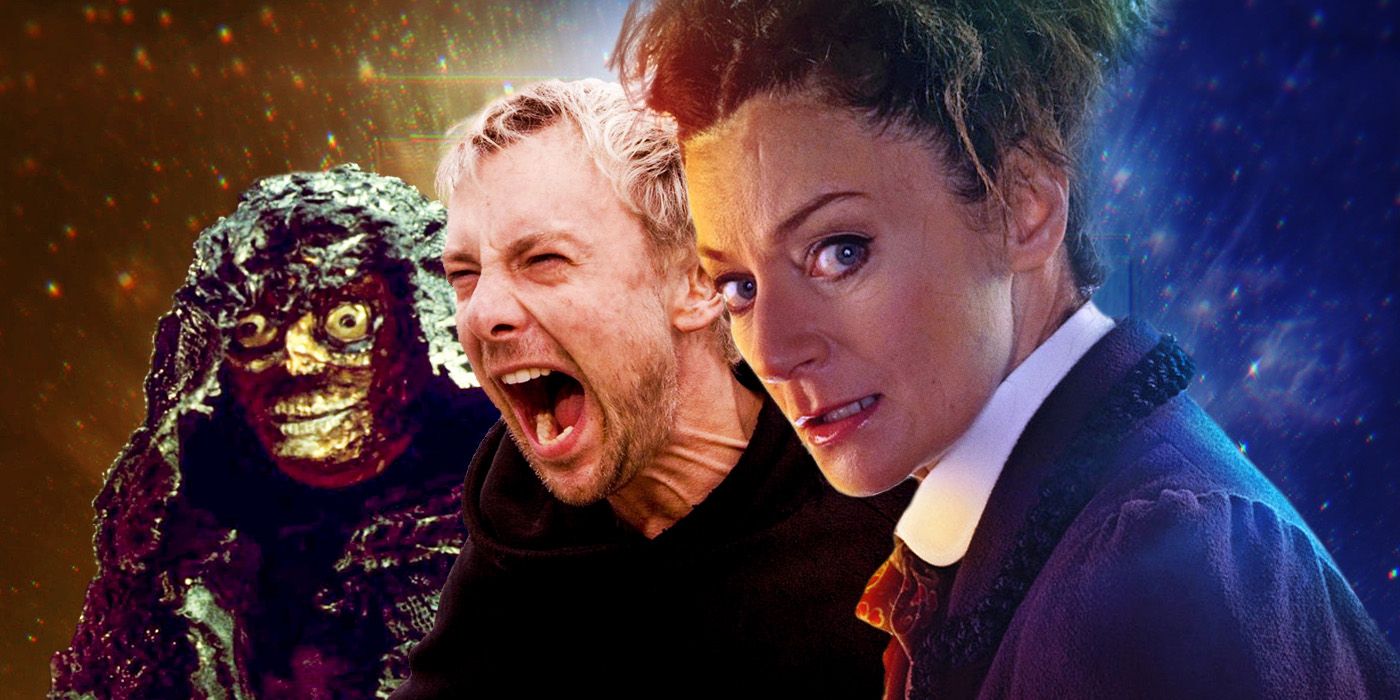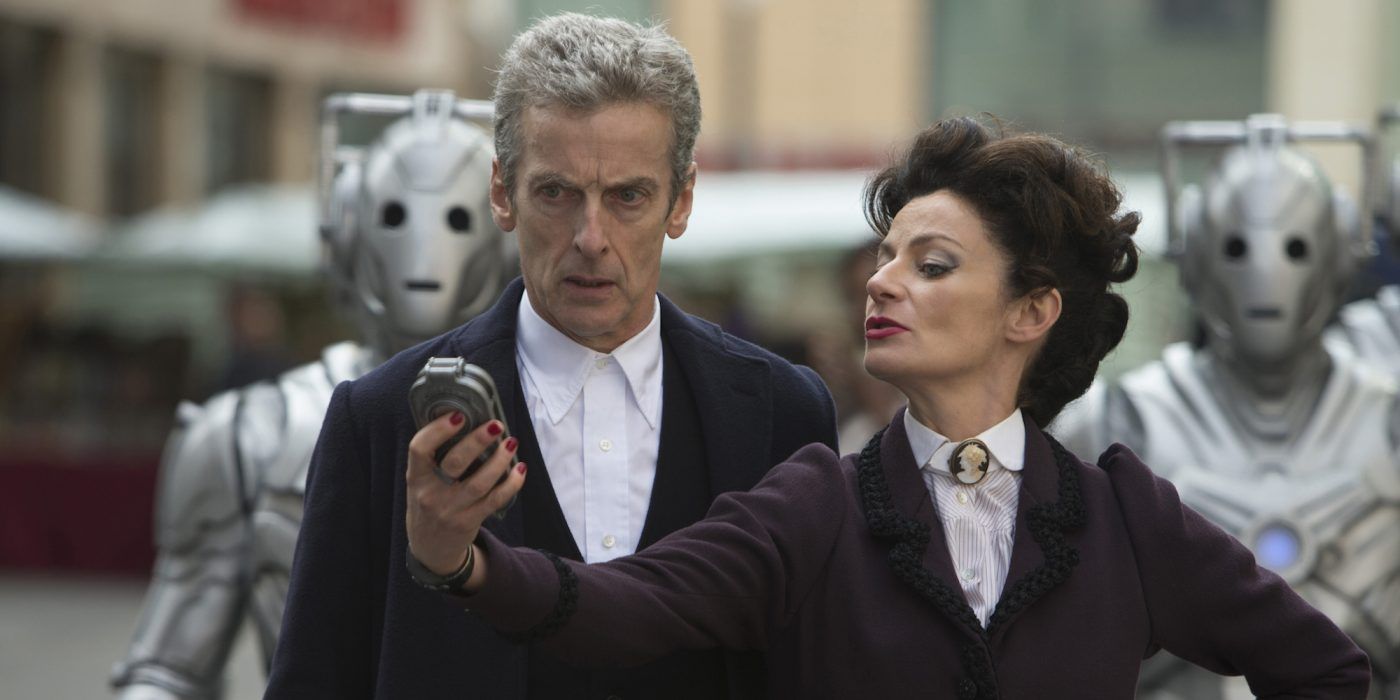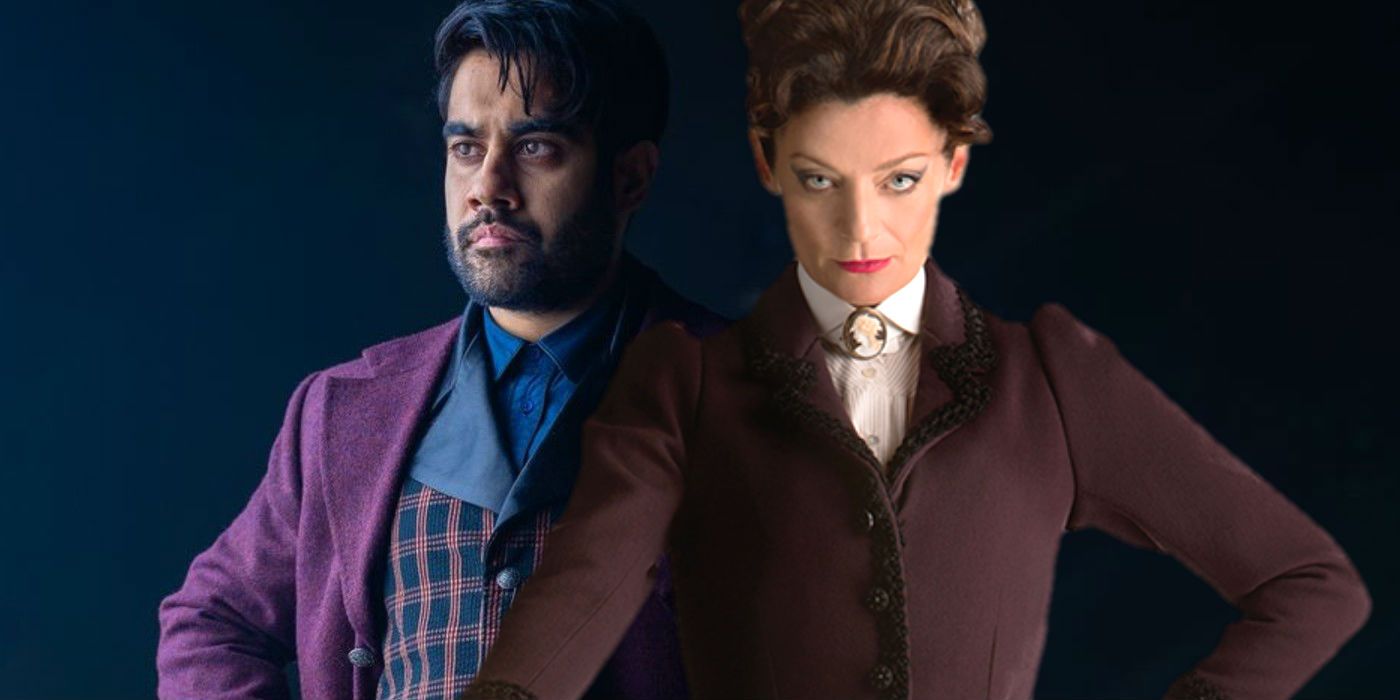
While the Master has been featured in modern Doctor Who ever since season 3, the character’s best incarnation, Missy, is also one of its most recent. Portrayed by Michelle Gomez, Missy embodies the Doctor’s former best friend better than any other version by adding a much-needed layer of depth to the Time Lord. The Master has always been one of the Doctor’s most formidable foes, but every incarnation until Missy suffers from a lack of interesting characterization. Missy’s arc solves this fundamental issue, finally bringing the Master’s emotional arc to a level that matches the character’s strength as a villain.
Other than Gomez, the Master has been portrayed by Derek Jakobi, John Simm, and Sacha Dhawan as the new Master in modern Doctor Who. While these actors, especially Simm, have received praise for their portrayal of the villain, their arcs lack substance. Despite electric performances onscreen, they all portray the same one-note maniac. The Master is known as a highly unpredictable foe, yet, ironically, these Masters are predictable in their goal of spreading havoc in any way possible.
The Masters of the modern era are characterized similarly to the Masters of the classic era of Doctor Who. Despite an interesting backstory, the classic Master’s most substantial traits were a yearning for immortality and a deep desire to defeat the Doctor at any cost. While his interesting backstory as the Doctor’s friend was enough to cement him as a fan-favorite Doctor Who villain, it was finally time to give the Master an update. With modern villains as compelling as The Weeping Angels and the Silence at their disposal, why should the Doctor Who team focus on a character that had become trite and predictable?

While Derek Jacobi didn’t get much screen time as the Master, John Simm’s performance in Doctor Who season 3 is nothing short of sensational. Manic and hyper, he’s the perfect foil to the energetic and animated 10th Doctor, played by David Tennant. Simm’s performance was greatly helped by incredible writing and an interesting storyline that felt like a real threat.
Despite how enjoyable it is to watch John Simm’s Master onscreen, it’s difficult to argue that he isn’t a one-note character. All he wants to do is take over the world and defeat the Doctor. His motivation and entire character can be summarized in one word: evil. He and the Doctor have a deep and complicated backstory, but the Master is interested solely in revenge. It never feels as if there’s a genuine possibility for reconciliation or growth because his hatred clearly overpowers any fondness he ever had for the Doctor. In fact, Simm’s Master even refuses to regenerate simply to spite the Doctor; in his dying moment, he lacks any core characteristics other than hatred and bitterness.
While Derek Jakobi appears as the Master in season 3’s “Utopia,” his character is disguised as Professor Yana for most of the episode, leaving him with little time to establish himself as the Doctor’s archenemy. But in his few moments exposed as the Master, like Simm, he displays few characteristics other than plain evil. Sacha Dhawan, the most recent incarnation of the Master, suffers from this exact same issue, even while echoing Missy’s arc. Dhawan’s Master is so plainly evil that, in Doctor Who season 11, he allies himself with a group of Nazis. It’s unclear where Dhawan falls in the Master’s timeline, but, from the perspective of how interesting the character is to watch, this new, un-nuanced Master is a clear downgrade from Missy. Dhawan does experience some type of emotional arc after he learns about the Timeless Child, but he deals with his emotions in the exact way that anyone would expect from the Master: rage and destruction.

When Missy is introduced as the Master in season 8, she’s characterized similarly to any other version of the lost Time Lord of Gallifrey. She’s dangerously clever, flamboyant, and unapologetically evil. In “The Magician’s Apprentice” from Doctor Who season 9, Missy goes on a killing spree simply because Clara suggests that she may have turned “good.” The scene alone makes it clear that Missy is the same as any other version of the Master, with maybe some additional obsession over the Doctor.
But introducing Missy as purely evil, someone who self-identifies as “bananas,” was a smart decision because it gave her character valuable room to grow. Missy’s real arc begins in season 10. After Missy spreads havoc throughout seasons 8 and 9, the Doctor swears to guard her in a prison. With Missy contained and powerless, Doctor Who now has a perfect opportunity to put her under a microscope and explore whether or not there’s any ounce of compassion remaining in her. If season 10 has one core question, it's whether or not it’s possible for a person who has been established as inherently evil to redeem themselves.
Throughout Doctor Who season 10, Missy is basically put through a crash course about compassion. Her hopeless isolation offers her an opportunity to reflect on her years of destruction and hate. It may be because she has nothing else to do during her imprisonment, but, on some occasions, she finds herself helping the Doctor. In her alliance with her old friend, Doctor Who finally capitalizes on the unique potential of the Doctor and Missy’s relationship; their relationship finally feels like a deep one with a palette of emotions instead of a simple rivalry based only on hate and spite. Through her relationship with the Doctor, Missy is able to find goodness within herself that leads the audience to believe that she may have truly changed.
Just when it seems like Missy has genuinely improved, season 10 brings back John Simm’s Master. This is a genius decision from the Doctor Who writing team; encountering her former self is a perfect final test for Missy, who claims to have abandoned everything this past Master represents. With the Doctor representing good on her one side, and her former self representing evil on her other side, Missy is now truly unpredictable. For most of “The Doctor Falls,” it feels as if Missy has reverted to her old ways; but without hope, without witness, and without reward, she proves that she has become good in a tragic final stand against Simm’s Master. This destruction of her former self represents her rejection of her old ways, finally completing her redemption arc. Missy is the first version of the Master who isn’t simply evil. Her transformation kept viewers on the edges of their seats week after week instead of giving them a character who is predictably evil from episode to episode.

It’s no secret that classic Doctor Who villains and characters often return in the new era, but Missy proves that fans can still respond positively when these characters are altered in a way that makes them more interesting. The Master was a hugely popular enemy, but also one who was deeply flawed in terms of characterization and potential. Missy’s arc fixed this problem instead of keeping the Master as a one-note beacon of pure evil. There are plenty of issues to address in other Doctor Who characters, such as the Daleks’ lack of interesting motivation, or companions existing solely for exposition.
It’s possible that Missy's success even blazed the trails for the Timeless Child. The Doctor Who team may have figured that if the community reacted positively towards significant change regarding the Master, it would also accept change for the Doctor. While there are fundamental differences between how these two arcs were implemented, Missy’s arc is a shining example of how to do it right. The character was perfectly updated, fixing a problem that desperately needed to be addressed, instead of adding new lore for no reason. In the future, Doctor Who shouldn’t be afraid to evolve its most beloved characters and enemies. It will be successful if it follows Missy’s model: building on a character to address a problem of a lack of depth or repetitiveness while still staying true to that character’s roots.
from ScreenRant - Feed https://ift.tt/3nbe9ZQ


0 Comments